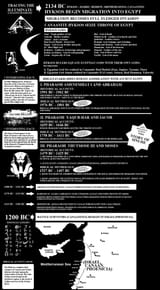Search Results
6/25/2025, 8:50:45 PM
>Agranat-Tamir et al. (2020) stated that Canaanites from the Intermediate Bronze Age (c. 2500–2000 BC) to late Iron Age I (c. 1000 BC) were genetically similar to each other. They lived in modern Israel, Jordan and Lebanon and could be modeled as "a mixture of local earlier Neolithic populations and populations from the northeastern part of the Near East (i.e. Zagros Mountains, Caucasians/Armenians and possibly, Hurrians)". Exceptions include the 2nd millennium BC inhabitants of Sidon, Abel Beth Maacah and Ashkelon, who were relatively heterogenous due to inflow from the eastern Mediterranean basin. The inhabitants of Ba'qah in Jordan also have probable admixture from "eastern desert groups". Following the Bronze Age, there was an addition of European-related and East African-related components, which were represented by Late Neolithic and Bronze Age Europeans and Somalis, from a north-south and south-north gradient respectively. The majority of modern Jewish and Levantine Arabic-speaking groups have 50% or more ancestry from peoples who were related to Bronze Age Levantines and Chalcolithic Zagros groups. This does not mean that any of these present-day groups bear direct ancestry from people who lived in the Middle to Late Bronze Age Levant or in Chalcolithic Zagros; rather, it indicates that they have ancestries from populations whose ancient proxy can be related to the Middle East
>Almarri et al. (2021) stated that Levantines and Arabians diverged from each other before the Neolithic period, with Levantines adopting a sedentary agricultural lifestyle. In the Bronze Age, immigrants with ancient Iranian-related ancestry replaced about 50% of the local Levantine ancestry
>Almarri et al. (2021) stated that Levantines and Arabians diverged from each other before the Neolithic period, with Levantines adopting a sedentary agricultural lifestyle. In the Bronze Age, immigrants with ancient Iranian-related ancestry replaced about 50% of the local Levantine ancestry
Page 1
